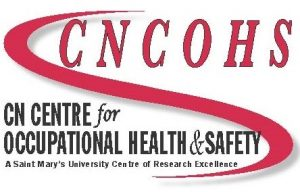Work Wellness Institute Membership!
Advance your Career & Improve your Workplace
- 350+ Lectures on Demand
- 18 self-paced e-Courses
- Accreditation opportunities
- Certifications for Members Only;
- Leadership Certification
- Inclusivity Recruitment & Retention Certification
- Work Wellness Ambassador Certification
Learn More about our Membership Program

Course Description
Although we’ve seen plenty of of work on mental health in the workplace, we still see questions about what we mean by ‘mental health’ and why we care about mental health in a safety conscious workplace. How are mental health and workplace safety related? Overall, the research and the practical work on the link between mental health and safety is limited.
It has been estimated that approximately 20% of the Canadian workplace experiences a mental health issue. When we consider stress as a mental health issue (and a potential precursor to more severe outcomes), up to 80% of Canadians report high levels of job stress. We know that mental health and safety are related, and that some of the outcomes of mental health (distraction, depression) lead to safety incidents.
This webinar will provide insights into these relationships, looking at how we define and view mental health at work, and providing practical discussion for organizations, leaders, human resources, and occupational health and safety professionals.
You will learn:
- About the link among mental health, physical health, and safety
- About effective workplace practices to (a) support workers, (b) create inclusive and effective workgroups, and (c) develop leaders to support mental health in a safety conscious workplace
- How to evaluate your own workplace in terms of these practices
- Create basic guidelines for integrating mental health into your safety practices
Take-home messages
- Psychological health is NOT an end state nor an absolute. Everybody is dealing with stuff in their lives
- In the past, organizations have tended to segregate safety issues/programs from other psychological health issues and programs. It is essential to integrate these perspectives to create healthier and safer workplaces.
- We don’t know a lot about the link between mental health and safety in the workplace, so we currently rely on related works or anecdotal evidence.
- We can address these issues in a variety of ways, using the EMPOWER model of (a) supporting individual workers (in terms of supports/accommodation and strengthening work groups (and their responses to mental health issues), and developing and supporting leaders to identify mental health issues, safety issues, etc.
- We need to think about shifting our focus to primary interventions focus instead of a tertiary ‘treating the wounded’ mentality.
- Workplace health and safety (including mental health) is a united responsibility of individual, coworkers, supervisors, unions, management, etc.
Members
If you have been provided with a Record ID through your organization, please update your profile before enrolling in a course. In order for your certificate to be issued, your profile needs to be up-to-date prior to your enrollment.
If you are having any issues, please contact [email protected]

Academic Sponsor

Director, CN Centre for Occupational Health & Safety and Professor in Industrial/Organizational Psychology, Saint Mary's University, Canada
Arla Day, PhD
Course curriculum
-
1
Mental Health in a Safety Conscious Workplace
-
Pre-Survey
-
Mental Health in a Safety Conscious Workplace
-
Mental Health in a Safety Conscious Workplace - Presentation Slides
-
Evaluation Survey
-
